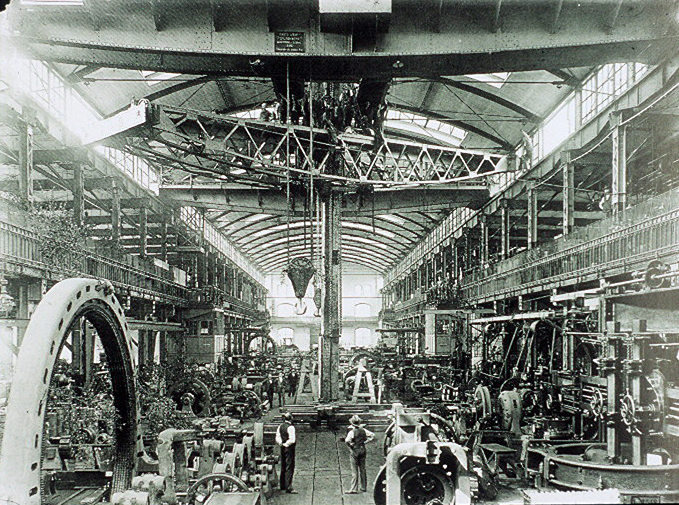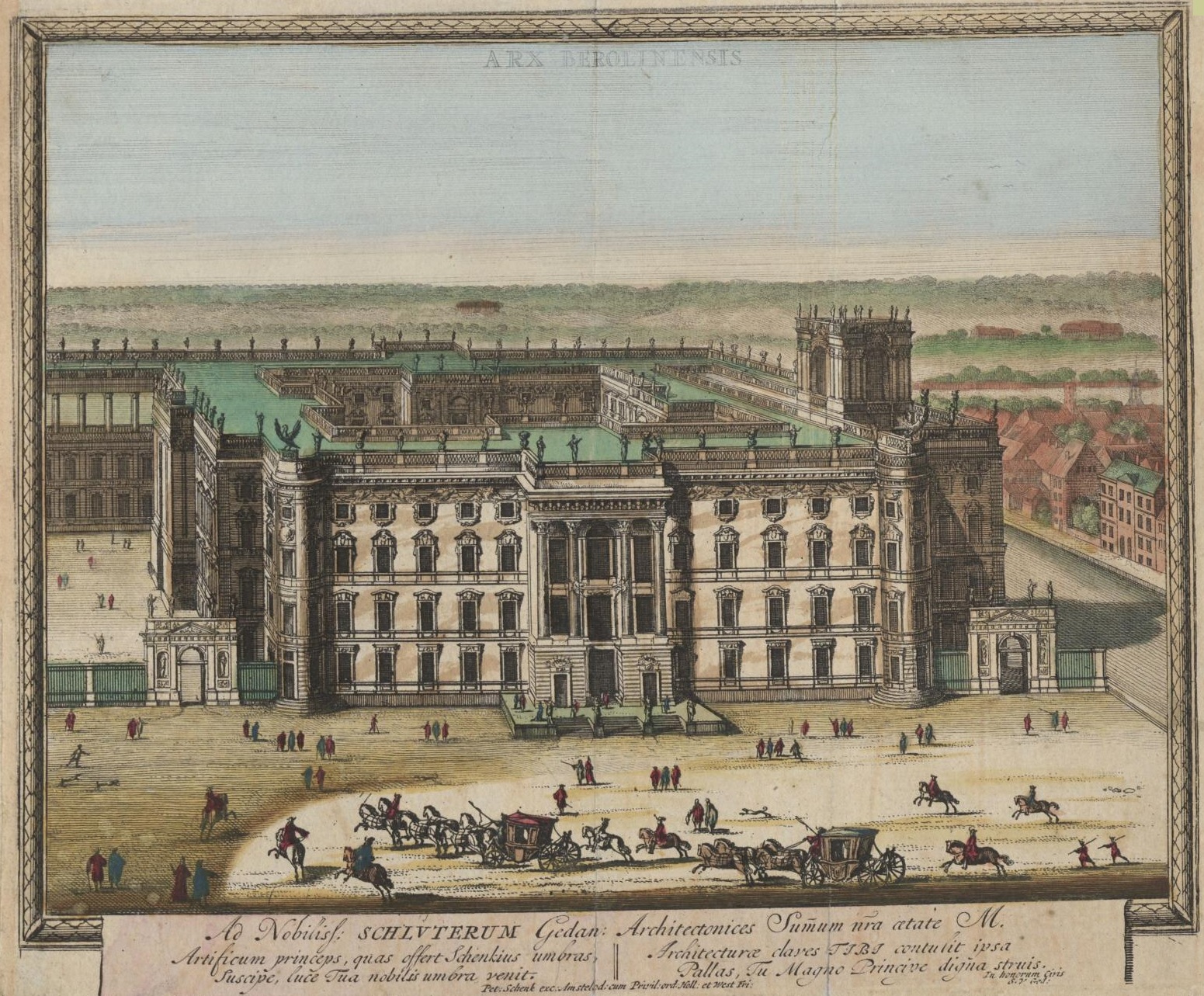|
Ursula Wendorff-Weidt
Ursula Wendorff-Weidt (6 August 1919 - 23 September 2000) was a German artist and illustrator who, in the words of one admiring obituary writer, "shaped people's living spaces as art spaces with brush and pencil for half a century", especially in Berlin. Life Ursula Wendorff was born in Moabit, Berlin-Moabit, a district of west-central Berlin. She studied between 1937 and 1943 at the "Meisterschule für Graphik" (art college) in Berlin, while also, at one stage taking evening classes in art with Otto Nagel. Nagel had already established a reputation as an artist and teacher, but he was also known to be a former Communist Party of Germany, Communist activist and was regarded with suspicion by Nazi Germany, the government Following his release from Sachsenhausen concentration camp, Camp Sachsenhausen in 1937, banned from teaching, so Wendorff was not permitted to describe herself as his "Meisterschulerin" (''loosely, "star pupil"'') of Otto Nagel till after End of World War II ... [...More Info...] [...Related Items...] OR: [Wikipedia] [Google] [Baidu] |
Moabit
Moabit () is an inner city locality in the borough of Mitte, Berlin, Germany. As of 2016, around 77,000 people lived in Moabit. First inhabited in 1685 and incorporated into Berlin in 1861, the former industrial and working-class neighbourhood is fully surrounded by three watercourses, which define its present-day border. Between 1945 and 1990, Moabit was part of the British sector of West Berlin and directly bordered East Berlin. Until the administrative reform in 2001, Moabit was a part of the district of Tiergarten. Colloquially, the name ''Moabit'' also refers to the Central Criminal Court (''Strafgericht'') and detention centre, which deals with all criminal cases in Berlin and is based in Moabit. Name The origin of the name ''Moabit'' is disputed. According to one account, it can be traced back to the Huguenots, in the time of King Frederick William I of Prussia. These French refugees are said to have named their new residence in reference to the Biblical description ... [...More Info...] [...Related Items...] OR: [Wikipedia] [Google] [Baidu] |
Weissensee (Berlin)
() is a quarter in the borough of in Berlin, Germany, that takes its name from the small lake (literally 'White Lake') within it. Before Berlin's 2001 administrative reform, was a borough in its own right, consisting of the quarters of , , , and . A fictional German-language TV series by the same name is set in the borough between 1980 and 1990 during the communist era. History was first mentioned in 1313 as . The first settlers subsisted on fishing and established themselves on the eastern shore of the lake, where an old trade route connected Berlin with (german: Stettin) and the Baltic Sea – today the federal highway. From 1914 onwards, the Weissensee Studios produced a number of silent films including works by Fritz Lang and the expressionist film ''The Cabinet of Dr. Caligari''. As Berlin's least inhabited district, it has been overshadowed historically by its neighboring boroughs and . However its popularity is increasing due to its proximity to the hip but ... [...More Info...] [...Related Items...] OR: [Wikipedia] [Google] [Baidu] |
Komische Oper Berlin
The Komische Oper Berlin is a German opera company based in Berlin. The company produces opera, operetta and musicals. The opera house is located on Behrenstraße, just a few steps from Unter den Linden. Since 2004, the Komische Oper Berlin, along with the Berlin State Opera, the Deutsche Oper Berlin, the Berlin State Ballet, and the Bühnenservice Berlin (Stage and Costume Design), has been a member of the Berlin Opera Foundation. History of the building The theatre was built between 1891 and 1892 by architects Ferdinand Fellner and Hermann Helmer for a private society. It first opened on 24 September 1892 as ''"Theater Unter den Linden"'' with Adolf Ferron's operetta ''Daphne'' and Gaul and Haßreiter's ballet ''Die Welt in Bild und Tanz''. The theatre was primarily a vehicle for operetta, but was also used for various other events and balls. Around 800 people could be seated in the stalls, and the balconies and various en-suite dinner rooms housed about a further 1,7 ... [...More Info...] [...Related Items...] OR: [Wikipedia] [Google] [Baidu] |
Socialist Unity Party Of Germany
The Socialist Unity Party of Germany (german: Sozialistische Einheitspartei Deutschlands, ; SED, ), often known in English as the East German Communist Party, was the founding and ruling party of the German Democratic Republic (GDR; East Germany) from the country's foundation in October 1949 until its dissolution after the Peaceful Revolution in 1989. It was a Marxist–Leninist communist party, established in April 1946 as a merger between the East German branches of the Communist Party of Germany and Social Democratic Party of Germany. Although the GDR was a one-party state, some other institutional popular front parties were permitted to exist in alliance with the SED; these parties included the Christian Democratic Union, the Liberal Democratic Party, the Democratic Farmers' Party, and the National Democratic Party. In the 1980s, the SED rejected the liberalisation policies of Soviet leader Mikhail Gorbachev, such as '' perestroika'' and '' glasnost'', which wou ... [...More Info...] [...Related Items...] OR: [Wikipedia] [Google] [Baidu] |
Bombing Of Berlin In World War II
A bomb is an explosive weapon that uses the exothermic reaction of an explosive material to provide an extremely sudden and violent release of energy. Detonations inflict damage principally through ground- and atmosphere-transmitted mechanical stress, the impact and penetration of pressure-driven projectiles, pressure damage, and explosion-generated effects. Bombs have been utilized since the 11th century starting in East Asia. The term bomb is not usually applied to explosive devices used for civilian purposes such as construction or mining, although the people using the devices may sometimes refer to them as a "bomb". The military use of the term "bomb", or more specifically aerial bomb action, typically refers to airdropped, unpowered explosive weapons most commonly used by air forces and naval aviation. Other military explosive weapons not classified as "bombs" include shells, depth charges (used in water), or land mines. In unconventional warfare, other names can refe ... [...More Info...] [...Related Items...] OR: [Wikipedia] [Google] [Baidu] |
Berlin Palace
The Berlin Palace (german: Berliner Schloss), formally the Royal Palace (german: Königliches Schloss), on the Museum Island in the Mitte area of Berlin, was the main residence of the House of Hohenzollern from 1443 to 1918. Expanded by order of King Frederick I of Prussia according to plans by Andreas Schlüter from 1689 to 1713, it was thereafter considered a major work of Prussian Baroque architecture. The former royal palace was one of Berlin’s largest buildings and shaped the cityscape with its dome. Used for various government functions after the fall of the monarchy in 1918, it was damaged during the Allied bombing in World War II, and was demolished by the East German authorities in 1950. In the 1970s, it became the location of the modernist East German Palace of the Republic (the central government building of East Germany). After German reunification and several years of debate and discussion, particularly regarding the fraught historical legacy of both b ... [...More Info...] [...Related Items...] OR: [Wikipedia] [Google] [Baidu] |
German Democratic Republic
German(s) may refer to: * Germany (of or related to) **Germania (historical use) * Germans, citizens of Germany, people of German ancestry, or native speakers of the German language ** For citizens of Germany, see also German nationality law **Germanic peoples (Roman times) * German language **any of the Germanic languages * German cuisine, traditional foods of Germany People * German (given name) * German (surname) * Germán, a Spanish name Places * German (parish), Isle of Man * German, Albania, or Gërmej * German, Bulgaria * German, Iran * German, North Macedonia * German, New York, U.S. * Agios Germanos, Greece Other uses * German (mythology), a South Slavic mythological being * Germans (band), a Canadian rock band * "German" (song), a 2019 song by No Money Enterprise * ''The German'', a 2008 short film * "The Germans", an episode of ''Fawlty Towers'' * ''The German'', a nickname for Congolese rebel André Kisase Ngandu See also * Germanic (disambiguation ... [...More Info...] [...Related Items...] OR: [Wikipedia] [Google] [Baidu] |
Group Of Soviet Forces In Germany
The Western Group of Forces (WGF),. previously known as the Group of Soviet Occupation Forces in Germany (GSOFG). and the Group of Soviet Forces in Germany (GSFG),. were the troops of the Soviet Army in East Germany. The Group of Soviet Occupation Forces in Germany was formed after the end of World War II in Europe from units of the 1st and 2nd Belorussian Fronts. The group helped suppress the East German uprising of 1953. After the end of occupation functions in 1954 the group was renamed the Group of Soviet Forces in Germany. The group represented Soviet interests in East Germany during the Cold War. After changes in Soviet foreign policy during the late 1980s, the group shifted to a more defensive role and in 1988 became the Western Group of Forces. Russian forces remained in the eastern part of Germany after the dissolution of the Soviet Union and German reunification until 1994. History The Group of Soviet Occupation Forces, Germany was formed after the end of Worl ... [...More Info...] [...Related Items...] OR: [Wikipedia] [Google] [Baidu] |
Soviet Occupation Zone
The Soviet Occupation Zone ( or german: Ostzone, label=none, "East Zone"; , ''Sovetskaya okkupatsionnaya zona Germanii'', "Soviet Occupation Zone of Germany") was an area of Germany in Central Europe that was occupied by the Soviet Union as a communist area, established as a result of the Potsdam Agreement on 1 August 1945. On 7 October 1949 the German Democratic Republic (GDR), commonly referred to in English as East Germany, was established in the Soviet Occupation Zone. The SBZ was one of the four Allied occupation zones of Germany created at the end of World War II with the Allied victory. According to the Potsdam Agreement, the Soviet Military Administration in Germany (German initials: SMAD) was assigned responsibility for the middle portion of Germany. Eastern Germany beyond the Oder-Neisse line, equal in territory to the SBZ, was to be annexed by Poland and its population expelled, pending a final peace conference with Germany. By the time forces of the United St ... [...More Info...] [...Related Items...] OR: [Wikipedia] [Google] [Baidu] |
Soviet Military Administration In Germany
The Soviet Military Administration in Germany (russian: Советская военная администрация в Германии, СВАГ; ''Sovyetskaya Voyennaya Administratsiya v Germanii'', SVAG; german: Sowjetische Militäradministration in Deutschland, SMAD) was the Soviet military government, headquartered in Berlin-Karlshorst, that directly ruled the Soviet occupation zone of Germany from the German surrender in May 1945 until after the establishment of the German Democratic Republic (GDR) in October 1949. According to the Potsdam Agreement in 1945, the SMAD was assigned the eastern portion of present-day Germany, consisting mostly of central Prussia. Prussia was dissolved by the Allies in 1947 and this area was divided between several German states ''(Länder)''. German lands east of the Oder-Neisse line were annexed by Soviet Union or granted to Poland, and Germans living in these areas were forcibly expelled, having had their property expropriated and been ro ... [...More Info...] [...Related Items...] OR: [Wikipedia] [Google] [Baidu] |





.png)
